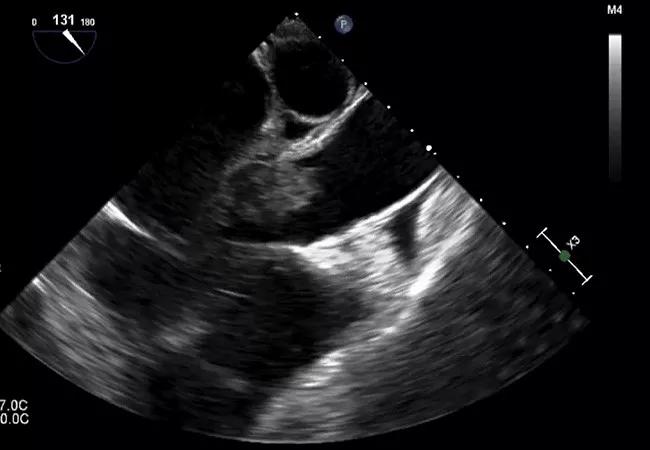Advertisement
Meta-analysis lends support to using 10 mm as threshold

Vegetation size larger than 10 mm confers significantly increased odds of embolism and death in patients with infective endocarditis, a large meta-analysis by Cleveland Clinic researchers has confirmed.
Advertisement
Cleveland Clinic is a non-profit academic medical center. Advertising on our site helps support our mission. We do not endorse non-Cleveland Clinic products or services. Policy
“A vegetation size greater than 10 mm has often been suggested as an optimal cutoff for estimating risk of embolism in infective endocarditis, but that’s been based largely on small observational studies,” says corresponding author Milind Desai, MD, Professor of Medicine at Cleveland Clinic Lerner College of Medicine and a Cleveland Clinic cardiologist. “So we decided to systematically review all published data to evaluate whether 10 mm is indeed an appropriate threshold for determining when a patient is at increased risk for embolization or death.”
“Better understanding of the risk of embolization will allow clinicians to adequately risk-stratify patients and help facilitate discussions about surgery in those with large vegetations,” adds Cleveland Clinic cardiothoracic surgeon Gosta Pettersson, MD, PhD, a co-author of the study, published in the April 2018 issue of JAMA Internal Medicine.
The stakes are high, as infective endocarditis is associated with embolic events in as many as 80 percent of cases, often leading to death.
The researchers reviewed the published literature through May 1, 2017, to identify all randomized controlled trials or observational studies evaluating the association of vegetation size greater than 10 mm with embolic events in adults with infective endocarditis.
Twenty-one unique studies, published from 1983 to 2016, met the inclusion criteria. They collectively included 6,646 unique patients with 5,116 vegetations with available dimensions.
Analysis of the data from these studies revealed that, compared with patients who had vegetations smaller than 10 mm, patients with vegetations larger than 10 mm had:
The increased association with embolic events and mortality was found to be independent of age, sex and type of valve involved. Notably, the association of vegetation size with embolic outcomes became more pronounced over the course of the period covered by the meta-analysis, with a much stronger association observed among studies conducted after 2000 relative to those before 2000.
“Clinicians need to balance the risk of embolism with the risk of surgery in the setting of infective endocarditis,” observes Dr. Desai. “Our findings will help us risk-stratify patients more effectively.”
“Once you have concluded that a vegetation is large enough to indicate an operation, the operation needs to be performed before it throws another embolus,” notes Dr. Pettersson. “This means it should be performed sooner rather than later, emergent or urgent.”
“Our long-standing clinical practice has been that vegetations of this size pose a substantial risk for embolization, stroke and even subsequent death,” adds Per Wierup, MD, PhD, a Cleveland Clinic cardiothoracic surgeon with a specialty interest in infective endocarditis surgery. “These findings are congruent with our clinical judgment, and it is refreshing to have firm data to support our risk-stratification in these extremely complex patients.”
Advertisement
Dr. Desai notes that, from a big-picture perspective, once infective endocarditis is diagnosed and a sizeable vegetation is detected, there’s a substantial group of patients who are best served by being transferred to a tertiary care center. “The full multidisciplinary expertise at such centers can be invaluable for handling the imaging, antimicrobial medications and complex cardiac surgery frequently required in these cases,” he concludes.
Image at top: Echo showing a large vegetation in a patient with native aortic valve endocarditis.
Advertisement
Advertisement

Surprise findings argue for caution about testosterone use in men at risk for fracture

Findings support emphasis on markers of frailty related to, but not dependent on, age
![GettyImages-1252287413 [Converted]](https://assets.clevelandclinic.org/transform/StoryPanel/350804b2-f1e4-4d97-a277-9629cf45af3e/23-HVI-4120348_redlining_650x450_jpg?w=3840&q=75)
Large database study reveals lingering health consequences of decades-old discrimination

Additional analyses of the two trials presented at 2023 ESC Congress

Prospective SPIRIT-HCM trial demonstrates broad gains over 12-month follow-up

An ACC committee issues recommendations to accelerate sluggish progress

Review of our recent experience shows it’s still a safe option

Machine learning may improve risk prediction and guide therapy